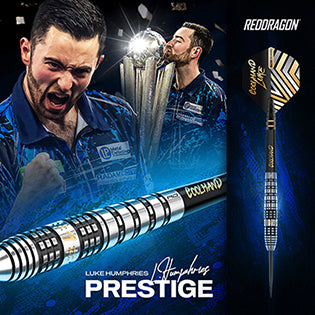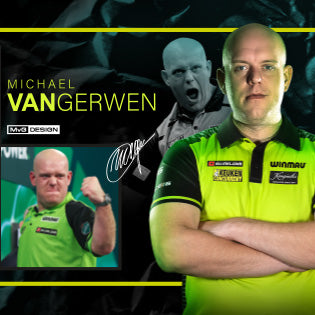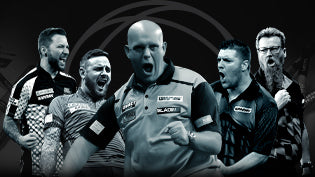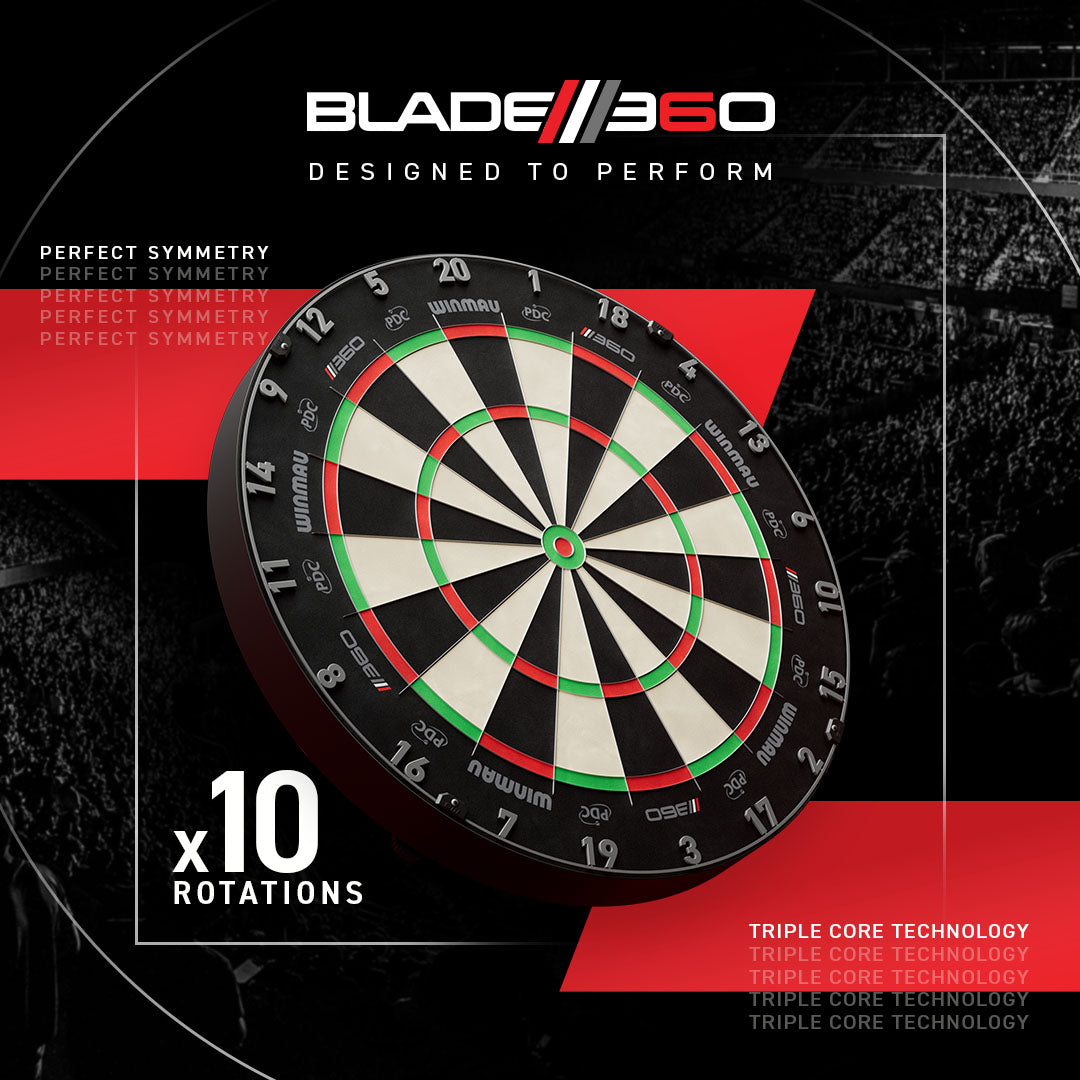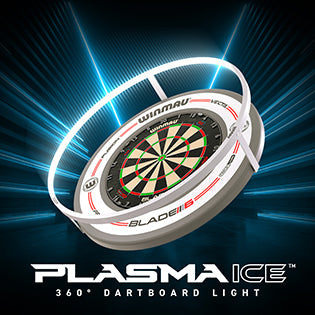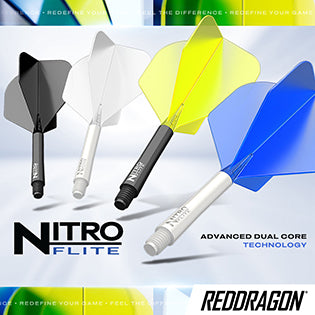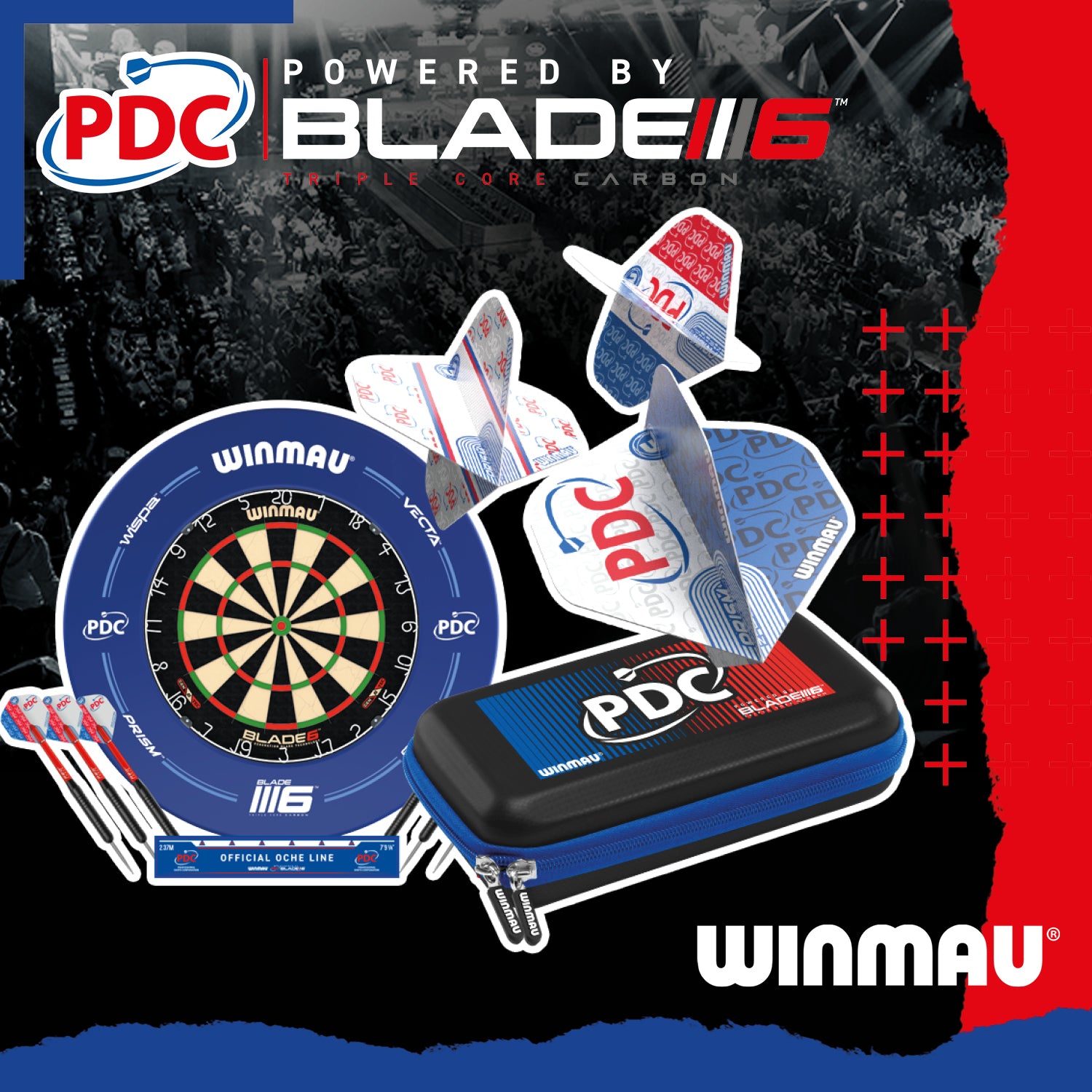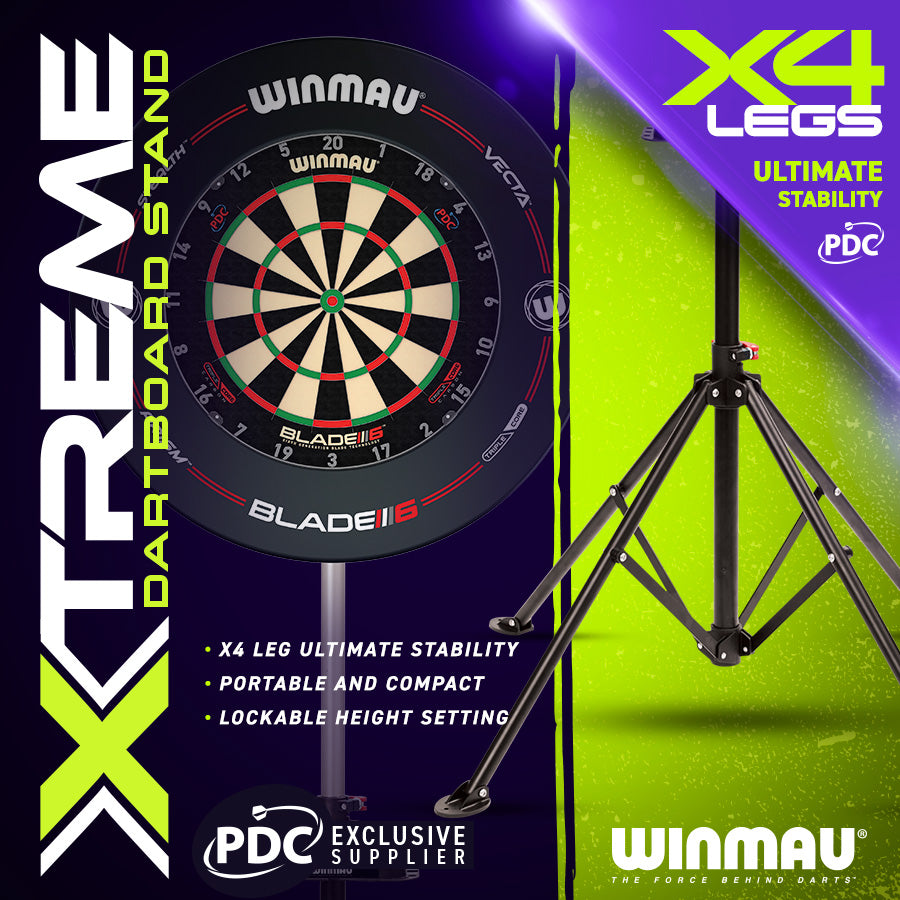
DR DARTS NEWSLETTER - PATRICK CHAPLIN - DECEMBER'24 EDITION
DARTS HISTORY
(formerly Dr. Darts' Newsletter)
Issue 177 | www.patrickchaplin.com | December 2024
HOUSE DARTS – THOUGHTS FROM 1984
In December 1984, as I mentioned in #175, I completed my first darts book. Titled Arrows By Any Other Name – A Guide to Friendly Darts, it covered all the aspects of casual darts that I  thought any darts player would be interested in or be amused by. I was confident that, there being no similar book available, it would be snapped up and published but no one took it on and there it has lain in my office for forty years – and still does. (Mind you, ten dart books that followed have been published.)
thought any darts player would be interested in or be amused by. I was confident that, there being no similar book available, it would be snapped up and published but no one took it on and there it has lain in my office for forty years – and still does. (Mind you, ten dart books that followed have been published.)
When I wrote the lead article for the October issue of Darts History, I included a mention of 'house darts' and promised to produce that section from Arrows… for this issue. It hopefully brings back to many of you those days when darts could be borrowed or rented for the night/match from the landlord/landlady on occasions when you had forgotten to bring your darts or just fancied a throw in an unfamiliar pub.
Here then is the unedited section from 1984 titled simply
THE HOUSE DARTS
For anyone not familiar with the expression 'House Darts' let me explain that they are simply the set of darts which are available from behind the bar. Most pubs issue their house darts free of charge as the chance of them being stolen is slight. Beware the landlord who charges a deposit on his house darts. Chance are that he will refuse to have them back, denying all knowledge of the earlier transaction.
The only possible method of having a reasonable game of darts with the set provided by the Management is to be the first person to play with them. However, if you were born after August 1948, you are out of luck I'm afraid.
House darts are more often than not found to be the combination of several old sets of arrows. They are kept, quite securely, jammed into an old cigar tin behind the till, on the bar or under the counter loose in an old chalk box together with the odd playing cards, a few dominoes, an empty matchbox and enough chalk dust to suffocate the pub cat.
House darts are always removed from their tin or box by gripping the flights tightly with one hand and yanking them out of the receptacle. They are usually forced back in the same way. Removing House Darts from the dartboard in this manner has no effect whatsoever on the general condition of the said darts.
Landlords often explain that the tatty House Darts are nothing really to do with them. "All our decent sets get nicked," you will hear them mutter and they further explain "I only supply these out of the kindness of my heart. Okay so they're not that good are they, but it stops people stealin' 'em."
The use of the House Darts has no advantages whatever for the person who has chosen to borrow or rent them unless the opposition is blind, deaf, has no limbs, no brain at all and is facing away from the dartboard when he throws. Even then the House Darts user can have problems. The chance that any opposition is as equally handicapped as the House Dart player is extremely unlikely. Friendly sides can use the House Darts to discourage unprepared, enthusiastic, visiting know-alls. "No, sorry mate. Can't let you borrow mine. They're my lucky darts. Every time I lend these out the price of the beer goes up. No, you'll have to use the house set."
Asking for the House Darts draws more attention to a person than if he had shouted "The drinks are all on me lads!" (No, perhaps as much as that.) The request also prompts more spontaneous laughter than Michael Foot's tailor.*
The full effect of the House Darts cannot be appreciated until you have actually witnessed a match in which they are being used. All is revealed as the poor unfortunate player throws them.
Nearly all sets of House Darts are different lengths and weights so that, when throwing, if the first dart miraculously lands somewhere near the treble 20 that is no guarantee at all that the second dart will even hit the board, let alone the same segment as the first. It will in all probability land on the carpet. The third dart when aimed at the treble 19 will hurtle majestically off in that general direction, veer to the right and strike a 4.
the first dart miraculously lands somewhere near the treble 20 that is no guarantee at all that the second dart will even hit the board, let alone the same segment as the first. It will in all probability land on the carpet. The third dart when aimed at the treble 19 will hurtle majestically off in that general direction, veer to the right and strike a 4.
Scoring with the House Dart, as with any other set of darts, is entirely dependent on the darts being able to reach the dartboard in the same condition as they left the throwers' hand. With a normal set a player will often, sometimes automatically check that the flights are secure before throwing the first dart.
With the House Darts it does not matter how much pre-match checking or tightening has been done, the result is always the same. The reason is that the House Darts are in a permanent state of gradual disintegration and, once in flight, the shaft is likely to part company with the barrel [if it has one] and flight from the shaft rather like a space rocket discharging its unwanted stages.
Reaching the dartboard is the easy bit! Once a dart has reached the target it must, to count for score, to stick in and stay in. A rare occurrence for the House Darts. These sets are notoriously blunt and seemingly no amount of sharpening or honing has any effect at all.
In my experience, the most startling shot ever seen using the House Darts was a player [who] threw the dart properly, but hard, it turned in the air, lost its flight and ended in the treble 19 – shaft first! (It still did not count.)
Friendly dart clubs looking for a way to brighten a dull evening can do a lot worse than play all night with the House Darts.
A slight variation of the House Darts is the Charity Box Dart where the set of darts are often slotted into a plastic charity [or cardboard] box on the bar and anyone wanting to use them is expected to pay a small donation for the joy of playing with a set of darts which are so light you have to keep a tight grip on them or they fly off on their own.
If you have to use these darts, do not place all your small change in the box. Keep at least three one pence pieces back and ask the resident strongman to bend them round the shafts so you stand a chance of losing with some dignity. It is not surprising that the size of the donation is not based on the number of games won.
* Michael Foot (1913-2010) Leader of the UK Labour Party (November 1980 to October 1983) who always seemed to dress untidily as if he had modelled himself on Columbo.
A DARTBOARD OR NOT A DARTBOARD? – FEEDBACK
In #175 I presented what an enquirer from Canada had told me was 'an old dartboard pressing mould' and asked me to suggest where she could sell it.
Not certain that it was a mould of a dartboard, I asked around and the only reply I received was suggesting that it was 'a metal wagon wheel or hubcap from an old vehicle…the style of decorative wagon wheel hubcap was commonly used on vintage cars, trucks, or carriages from the early 20th century…'
With nothing else to go by, in #175 I ended the piece with "So not a dartboard at all. You could have fooled me! What do you think?"
 Within hours of receiving his copy of Darts History, UK
Within hours of receiving his copy of Darts History, UK reader Mark Shirley sent me an email titled 'Re. The 'Decorative Hubcap.' Mark wrote
reader Mark Shirley sent me an email titled 'Re. The 'Decorative Hubcap.' Mark wrote
'Reversed it looks to me like a classic alloy printing plate, definitely depicting a dartboard though given the double ring of 'doubles' it was probably not intended to be accurate…Cheers, Mark.'
REMASTERED WINMAU WORLD MASTERS
I'm writing a piece about the re-mastered WINMAU World Masters and, looking back, am writing about the third Masters, when the company started to sponsor it.
writing about the third Masters, when the company started to sponsor it.
I never realised that the trophy that I always assumed was THE trophy was not the trophy used at the start or indeed in the first WINMAU in 1976 (see attached photo). Or was it?
I asked my great friend Dr. Eddie Norman, who was involved with the World Masters from the beginning: "Do you have any idea when the trophy was changed?"
He replied
Hi Patrick. The trophy enclosed is a bit of an enigma.
When the original World Masters was designed in 1974, there were three prototypes made, same top, different bottoms, we loved the top pieces with the darts but the bottoms had to be unique and the final choice was to be changed to the big circular one not the square base... I have the impression that this was possibly a prototype that was never used
As far as I know there was only ever one trophy and was the big one that we all know.
In 1976, Harry Kicks, at Winmau, thought Winmau might introduce a new, new trophy as Winmau took over the sponsorship, but it was decided against as it was agreed that the Championship should date from 1974, with the original trophy.
Tom Fleetwood from USA at the inaugural dinner in 1974, said in his speech, the World Masters Trophy should never change and hoped it would around for another 48 years- it almost was for half a century until it was sold off. As he said sponsors might change but 1974 was the year it was founded. Ollie Croft in 1974 said he thought it would run for 100 years,
The Kicks family took over the sponsorship in 1976 and until 2002.
In 2002 Nodor bought the Winmau Company and kept the championship going for a few years until the BDO collapsed and the trophy was sold.
The WDF apparently are also continuing to run a World Masters.
TOE THE OCHE – MORE FEEDBACK
You will recall that John Plews recently donated a number of magnetic tapes to me for safe-keeping that were used to construct the famous VHS tape Toe the Oche back in the 1980s.
Having subscribed to Darts History, John has provided some more feedback relating to that tape and other darts-related matters.
'Hi Patrick,
Thanks for the latest newsletter. Interesting article about the use of 'soaked boards.' I'm sure I remember a few pubs used them in the sixties. Must have been in Blackpool during my first Summer Season there in 1966!
[For many years, indeed from the start, from the turn of the 20th century, wooden dartboards  were the best ones to use and, yes, they did need to be soaked overnight to maintain their playability. The wood was usually either elm or poplar but these were exceeded by bristle boards when, in the early 1970s, (1) elm disease decimated the trees in the UK, and (2) with the growth of the British Darts Organisation (BDO) taking full control of the game, bristle boards became compulsory at all levels of BDO-controlled tournaments with only sisal from Africa having to be utilised in the construction of the board. This way only WINMAU boards could be used because no other country at that time had their boards made on that continent. John continued…]
were the best ones to use and, yes, they did need to be soaked overnight to maintain their playability. The wood was usually either elm or poplar but these were exceeded by bristle boards when, in the early 1970s, (1) elm disease decimated the trees in the UK, and (2) with the growth of the British Darts Organisation (BDO) taking full control of the game, bristle boards became compulsory at all levels of BDO-controlled tournaments with only sisal from Africa having to be utilised in the construction of the board. This way only WINMAU boards could be used because no other country at that time had their boards made on that continent. John continued…]
Glad to see "Toe the Oche" got a bit of interest. I didn't realise that the Harrows/Bristow programme was on those tapes. As I mentioned before, Dick Allix [Eric's manager] got a bit upset because seven out of eight appearances by Eric in "Toe The Oche" had him losing the match.
So, I made "Hit Me With Your Best Shot" as a bit of a peace offering!! I think Harrows paid for the production and they used it as a promotional video for their darts and for Eric.
["Hit Me With Your Best Shot," was a global chart hit in 1980 for US rocker Pat Benatar so I guess this was the inspiration for the title of his Harrows/Bristow video.]
And, the reason there's only one BBC tape is because the BBC royalties department wanted about four times the amount I'd agreed with the ITV companies so, if I remember rightly, there's just six minutes of BBC material and the rest is from ITV tournaments!
Finally, our company Ovation made several trade video programmes for The Taunton Cider company in the eighties and so they were very helpful with the sponsorship angle which is why the Blackthorn Masters picture is on the "Toe the Oche" cover.
 Think that tournament was held each year in Oldham and I remember chatting with Eric, Cliff [Lazarenko] and Jocky after the darts. Much Dry Blackthorn Cider was consumed in the free bar!
Think that tournament was held each year in Oldham and I remember chatting with Eric, Cliff [Lazarenko] and Jocky after the darts. Much Dry Blackthorn Cider was consumed in the free bar!
Your reader Chris Lovell was right about Taunton Cider being keen on darts, I remember there was also an Autumn Gold Masters in the North East. The company were bought out in the nineties by a distribution company (Matthew Clark) in a deal that suited 'The City' but not the drinkers and dart players. Very sadly there is now a housing estate where the cider mill, apple store, and factory once stood…
Like the picture of you and one of the tapes!!'
[See left, the front cover of the Taunton Dry Blackthorn Darts Masters finals programme from 1988, the same year as Toe The Oche was issued. That year Mike Gregory beat England's Mick Manning in the final to pick up the Champions cheque for £5,000. Mick collected £2,500 while the joint third players, who collected £1,250 each, were Eric Bristow (who had been beaten in his semi-final by Mick) and Jocky Wilson who had been beaten in the other semi by Mike.]
PIG BRISTLE
In #176 I mentioned the myth, created in the late 1930s, that bristle dartboards were made of pig bristles and that in 2012, I debunked the 'pig bristle' myth I thought, once and for all, in my book 180! – Fascinating Darts Facts, (Stroud: History Press. Still available.). I added that '…if I Googled "What are bristle dartboards made of?" today, someone out there is telling you…'
Well, I did have a brief trawl around Google recently and - YES! - despite my best efforts, the myth still exists. I first found one source that informed me that bristle was 'a material like nylon,' then adding 'usually taken from plants and animals.' ANIMALS? What? Any particular animal? A lion? An elephant? A coypu? Whilst another stated that 'Bristles are thin, sharp, and pointy, stiff hairs that grow on animals or from plants.' There was no mention of pigs but surely the idea that the board is made from animal bristles is where it started back in 1938. (The photo above, © Mopsnapz, shows a group of Herefordshire pigs discussing how silly the idea is.)
the myth still exists. I first found one source that informed me that bristle was 'a material like nylon,' then adding 'usually taken from plants and animals.' ANIMALS? What? Any particular animal? A lion? An elephant? A coypu? Whilst another stated that 'Bristles are thin, sharp, and pointy, stiff hairs that grow on animals or from plants.' There was no mention of pigs but surely the idea that the board is made from animal bristles is where it started back in 1938. (The photo above, © Mopsnapz, shows a group of Herefordshire pigs discussing how silly the idea is.)
But then I searched 'pig bristle,' and up came a question "What are dart boards made out of?" and "Are dartboards made of pigskin?" Pigskin? (Dooh!) The answer came forth:
'Today's boards are made of sisal fibre which are the strands from a cactus of the Sisalana family. These boards were called Bristle boards, which has nothing to do with pig's bristle…'
Hooray! But this was followed by
'…that was a nickname given to them in the early days.'
Oh dear. After that I gave up. With the internet there is now no way that such myths can be exterminated or new ones, like the 'nickname,' created and then deleted. I guess that's what is known as 'Fake (darts) News.'
DECEMBER 1937 – THE QUEEN PLAYS DARTS
In their quarterly review of news around the world, World News Illustrated (Part 2 October, November, December 1937) a photograph of a major (and surprising) darts events was recorded.
On 17th December 1937 King Edward VI and Queen Elizabeth, undertook an extensive tour of the Slough Centre, a new concept; a community centre, which included the Games Room where bar billiards, table tennis, and darts were being played.
 Unexpectedly, the Queen asked one of the dart-players if she could try the game. The Queen threw first, scoring a single seven, a single thirteen and a single one, a total of twenty-one points. The King then took the darts and scored nineteen points, the King then announcing that the Queen had won the game by two points.
Unexpectedly, the Queen asked one of the dart-players if she could try the game. The Queen threw first, scoring a single seven, a single thirteen and a single one, a total of twenty-one points. The King then took the darts and scored nineteen points, the King then announcing that the Queen had won the game by two points.
This, albeit brief, involvement of the royal couple with darts was reported in the national daily newspapers, reference being made to a 'Royal Visit to Workers' Club' and 'The King and Queen Play Darts.'
Surprisingly, the News of the World, which was building a reputation as being a massive supporter of darts through its Individual Darts Championship, underplayed the visit, merely summarising that which had been written by other national newspapers and adding that 'if further evidence were required of the growing popularity of darts…' this was surely it.
The editor of Darts and Sports Weekly News predicted that, by throwing only three darts, the Queen would encourage thousands more women to follow her example and begin playing 'the world's most fascinating game.'
Another newspaper report indicated that the Queen's actions had changed the country's overall perception of darts and made everyone, especially British women, 'darts conscious.' Thousands of women had approached the British Darts Council (BDC) asking where they could obtain tuition in dart-throwing. Mr. R. B. Tillcock, Honorary Secretary of the BDC, reported that his organisation had been 'snowed under with inquiries' from women.
 Interest in dart-playing had been growing amongst the upper classes from the mid-1930s as a 'fad' but the recognition of the game, especially by Her Majesty the Queen, increased such popularity. It is also expected that the book Darts written by journeyman author, Rupert Croft-Cooke, in December 1936 would have been on the Christmas lists of thousands of women and girls in December 1937 following Her Majesty's three darts and resulting Darts being reprinted.
Interest in dart-playing had been growing amongst the upper classes from the mid-1930s as a 'fad' but the recognition of the game, especially by Her Majesty the Queen, increased such popularity. It is also expected that the book Darts written by journeyman author, Rupert Croft-Cooke, in December 1936 would have been on the Christmas lists of thousands of women and girls in December 1937 following Her Majesty's three darts and resulting Darts being reprinted.
Croft-Cooke's view of women playing darts was clear from other writings in which he had been 'disgusted to hear, [that] London hostesses have discovered the game as a means of preventing their guests from boring one another.' Indeed, for women playing in general he wrote,
'There are women who can play darts. They are few and their merits are usually exaggerated, but they exist…There are times when a woman who really can play may be welcome, but they are rare. And it would be as well if they realised it.'
I suspect that Croft-Cooke didn't mind when thousands of women received his book at Christmas in 1937 and his royalties (No pun intended…OK it was.] from Darts rocketed!
MY RESEARCH IS SPONSORED BY

NOTE: Text © 2024 Patrick Chaplin or as shown. Images © Patrick Chaplin or as stated or sourced. Neither text nor images can be reproduced without prior permission of the copyright holder(s). Sponsors website: winmau.com.




